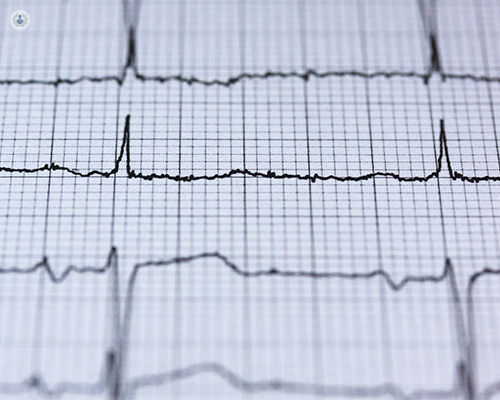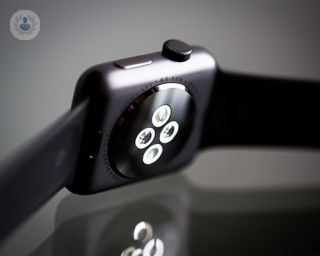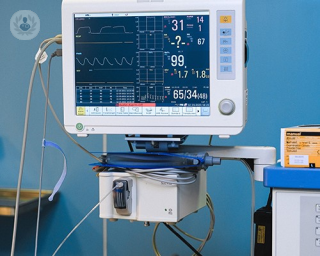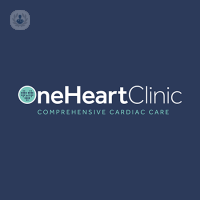Electrocardiogram
What is an electrocardiogram (ECG)?
An electrocardiogram (ECG) is a diagnostic test used to measure the rhythm, rate and electrical activity of the heart. The ECG is one of the most important and commonly used tests to investigate certain heart diseases. There are three main types of ECG:
- Resting ECG – done when the patient is at rest, lying on a table.
- Stress ECG – done whilst the patient is using a treadmill or an exercise bike.
- Ambulatory ECG – a small portable device with wires connected to the chest is worn whilst the patient is outside the hospital for a period from 24 hours to 7 days.

What does an electrocardiogram (ECG) consist of?
An ECG is performed with the patient awake, lying on an examination table. The specialist applies small sticky patches called electrodes to the chest, arms and legs, which are connected by wires to the ECG machine, which converts the electrical signals into a graph that is printed on paper.
Why is an electrocardiogram (ECG) done?
An ECG is performed to measure the activity of the heart and to detect irregularities such as arrhythmias, damage to the heart, the size of the heart chambers or the effect of medications or devices such as pacemakers.
Diagnostic spectrum of an ECG include:
- Atrial fibrillation
- Supraventricular tachycardia (SVT)
- Heart attacks
- Coronary heart disease
- Cardiomyopathy
Preparation for an electrocardiogram (ECG)
The patient who is going to have an ECG should inform the specialist about any medications they are taking. Other than that, no special preparation is required before having an ECG.
What does an electrocardiogram (ECG) feel like?
An ECG is completely painless and the patient will not feel discomfort. An ECG lasts just a few minutes and the patient can usually return home straight afterwards.
Meaning of abnormal results from an electrocardiogram (ECG)
Abnormal results from an ECG will show irregular waves or spikes on the graph, which can be due to multiple coronary issues, such as arrhythmias, damage to the myocardium, enlargement of the heart, heart attack, myocarditis, or congenital heart disease.

















